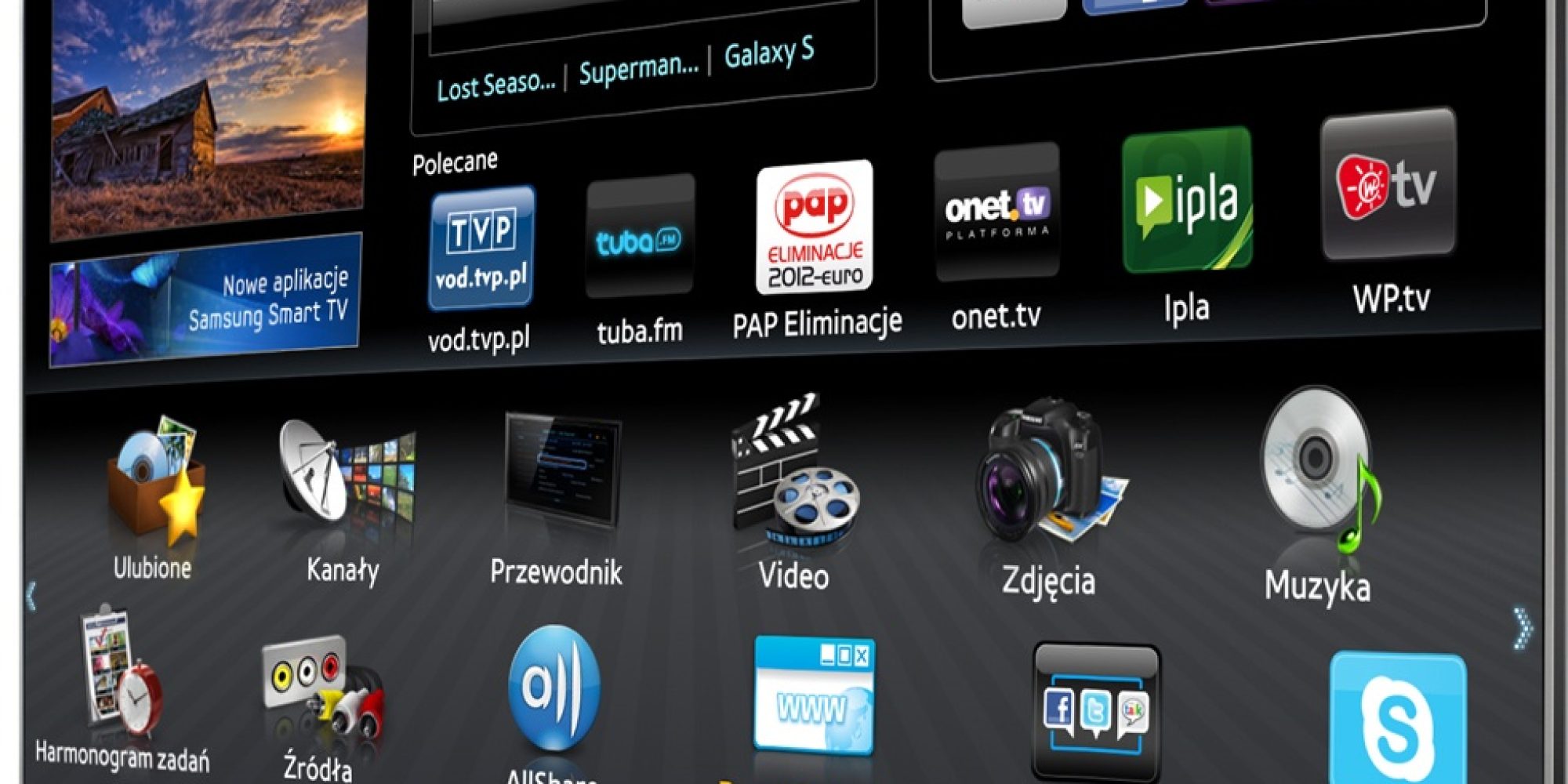TV streaming is not new. It has been done for a while and it will stay with us in future as well. A lot of communications, including video (TV), are moving from their traditional channels of delivering the content to using IP protocols. TV industry has begun to make this shift and won’t stop until it will be done completely. I’m no specialist in technologies of communications, but it might be that using the same cables for both internet access & TV content delivery is also more cost effective than keeping up two separate infrastructures. If it is not now, it should be in near future.
A relatively short time ago first affordable/mass production “smart” TVs were introduced. The most important thing about them is that they implement the “app” phenomena and are constantly connected to web. That’s for introduction to internet-connected TVs.
Some time ago biggest Latvian social network draugiem.lv introduced it’s newest initiative- web based media platform draugiem.tv which includes streams of Latvian & foreign TV channels, radio streams, movie rentals and some other features- with promise to expand the list of services available on platform. By doing this they made a challenge to biggest Latvian internet & TV provider Lattelecom- since it also provides a browser based media streams.
For a short while it was all silent, until recently Lattelecom made it known that they are looking for a person who could make their TV more social. That means just one thing- Lattelecom has understood that Draugiem can be a serious competitor in Latvia‘s market.
It has been a few days since it is on my mind, so I decided to weigh in on what has happened & what could happen in near future.
I don’t know what’s the masterplan for this so platform, so in this paragraph I could be very very wrong. Anyways, here we go.
In my opinion the very idea of building separate media platform for social network so massive was not the best one. Even more, Draugiem.lv already have an integrated music platform- combination of the music platform, brand pages, groups, news feed and all other social network’s aspects are a great place for innovation and building a truly social TV consumption environment.
We can see how Spotify and other music services want to integrate in Facebook, how news outlets use Facebook, how Apple tried to enter the social media with their music-based social network “Ping”, how Netflix & Hulu wants to be social and how YouTube from video hosting platform is becoming of more and more social network.
Overall, it’s not bad, I actually like the platform- there’s not much, but it’s easy understandable, has live chat section next to TV streams and movie rentals are pretty easily done via sms payments. Since it’s just beginning (it hasn’t even been a month since public launch), the platform has a room to grow. The sections which are not live yet (TV Shows & Stage) also carry a hope that this will be a platform which let’s media creators sell their shows (like on iTunes) or to be easy discoverable by masses on the “Stage section”. I believe that there are other, unannounced, plans as for this site as well.
Let’s wait and see.
This is only about the Lattelecom internet TV, not other products they offer.
I haven’t been using Lattelecom, but for sake of this blog post I did register for a free 7-day trial. Yes, this service is not free (on contrary of draugiem.tv). Also, this service has only two sections- Movies and Live TV.
What’s better- the movie choice is wider and there are more live TV channels EDIT: Thanks to jurgenzz for spotting the mistake- one of the most popular Latvian TV channels “TV3” due to some reasons is not being broadcasted on any of these platforms.
What it lacks is any kind of social features. Whereas draugiem.tv provides live discussions about content, displays who of friends are watching the same live content, lets share the content to their social network, lattelecom.tv doesn’t offer any of this.
What to expect
This is only about Latvia, my predictions are based on global trends and my gut (for the most part on my gut).
The TV (or video) content itself isn’t social- it is created by professionals for masses and when it’s done good, it creates motivation to share, engage and discuss. For the most part. Of course, there are exceptions- crowdsourced content, input from audience and other means of using “social” or crowds to create content.
What can be made social, is the consumption of the content. And social consumption doesn’t end with chat bar next to the video stream. Social engagement needs:
- Suited/managed/motivating environment,
- Promotion of ways to engage
- Approval or recomendation of peers (overall feedback & friend recomendations and check-ins)
- Possibility to share one’s opinion by linking back to source
- Involvement of content creators (social communities have to be nurtured)
- Other features
Previous points explained:
Need for environment is obvious- conversation & sharing have to happen somewhere- be it discussion boards, twitter, facebook groups, dedicated sites, whatever.
Promotion of the preferred way of communication has to be let known as well. Example: a lot of US shows from time to time (not too often- not to distract) let viewers know in corner of the screen what kind of hashtag to use, when tweeting about the specific show when it’s on. Or address of Facebook page- it doesn’t matter where’s the medium- the viewer’s urge to share has to be directed in some kind of direction- where one can share and engage with others who are interested in this specific topic.
Approval or recomendation of peers – this has been implemented in draugiem.tv- they show me which of my friends and how many people overall are watching the same thing. This has to be taken further- social networks have to be integrated in the experience of choosing, watching, sharing and engaging with the content. Next to each rental have to be faces of my friends who have seen the content, their comments, likes, everything. That’s what sells. If I know that three of my friends, who like the same movies as I do, have seen that one and one even has given thumbs up, that movie has to be good.
Possibility to share one’s opinion by linking back to source – twitter hashtags and facebook pages offer the way of doing this. If i tweet with hashtag, anyone can click it through and see what it’s about. Facebook tags also let people to show what it’s about with specifing the source (wall with tags). This is a problem in Latvia, since none of these options (tagging something & filtering information by the tag) are available on draugiem.lv. There are at least a few workarounds, let’s see who of competitors will work this out in more efficient way. :)
Involvement of content creators – if show or episode is on once a week, ir doesn’t mean that consumers of any kind of content aren’t interested in the same topics for the the rest of the week. Actually, it surprises me how inactive (am I wrong?) in social networks are creators of Latvian TV shows. With “social networks” I mean draugiem.lv- twitter or facebook activities in this case in Latvia are not so relevant. For example I couldn’t find a draugiem.lv page of most popular of Latvian TV shows- Ugunsgrēks. What’s up with that?
Final thoughts
The winner will be the one who will create the best social experience for watching TV. Both competitors have their benefits- draugiem.tv doesn’t have much users, but have the largest Latvia’s social network behind them & Lattelecom haven’t got their own social network, but have more TV-watching consumers in Latvia than anyone else.
Draugiem.tv have made their iPad app, Lattelecom.tv is based solely on web browser.
I believe that people will watch TV in their living rooms, but use their secondary screens (iPads, laptops, phones) for the social experiences built around the content. That means that browser-based clients have to be updated to fit these needs both if user has TV set or doesn’t and dedicated applications for laptops & PCs are welcomed to ensure the same unified experience on any of the screens.
There has to be full integration of social networks, experiences have to be easily & natively shareable and there should be apps for all the popular and emerging platforms.
To Lattelecom.tv & draugiem.tv people I suggest to steal ideas from:
- Newsgroup, forum, message board mechanics- for live show discussions
- IntoNow (TV watching app by Yahoo)- for user interface ideas
- Basics of various social networks- for integrating various social networks & sharing options
- Various feed mechanics (EdgeRank, Twitter, Tumblr, Pinterest, Draugiem)- for filtering user feeds
- Foreign TV show practices- for engagement ways wih audience
- Ping (Apple’s try in social networking)- for mechanics on how to build environment around content
- Get Glue – for how & why users check in music, books and other interests
By nicely combining relevant features of these services and implementing other (maybe some gamification?) elements it is possible to emerge in this market.


